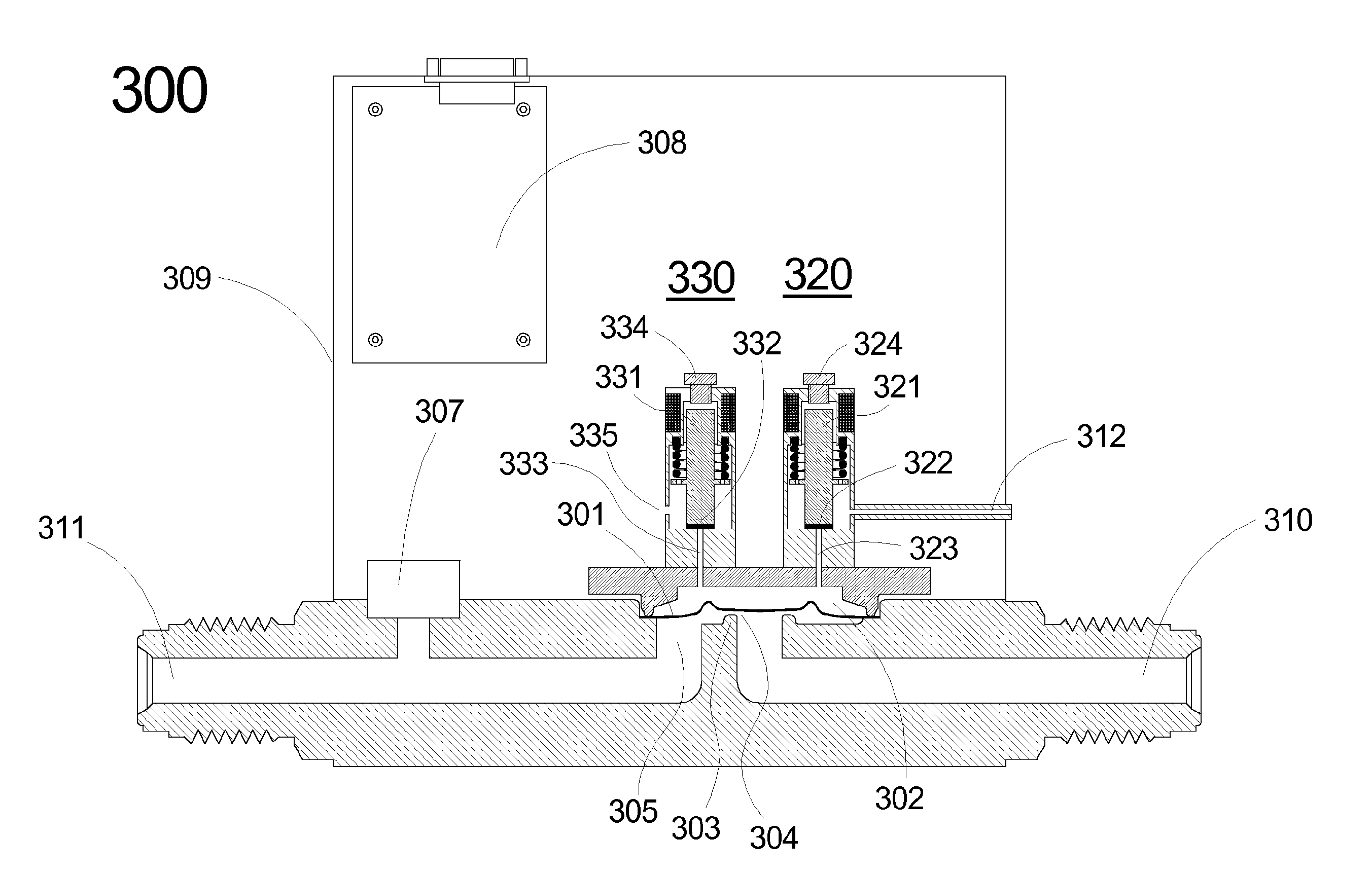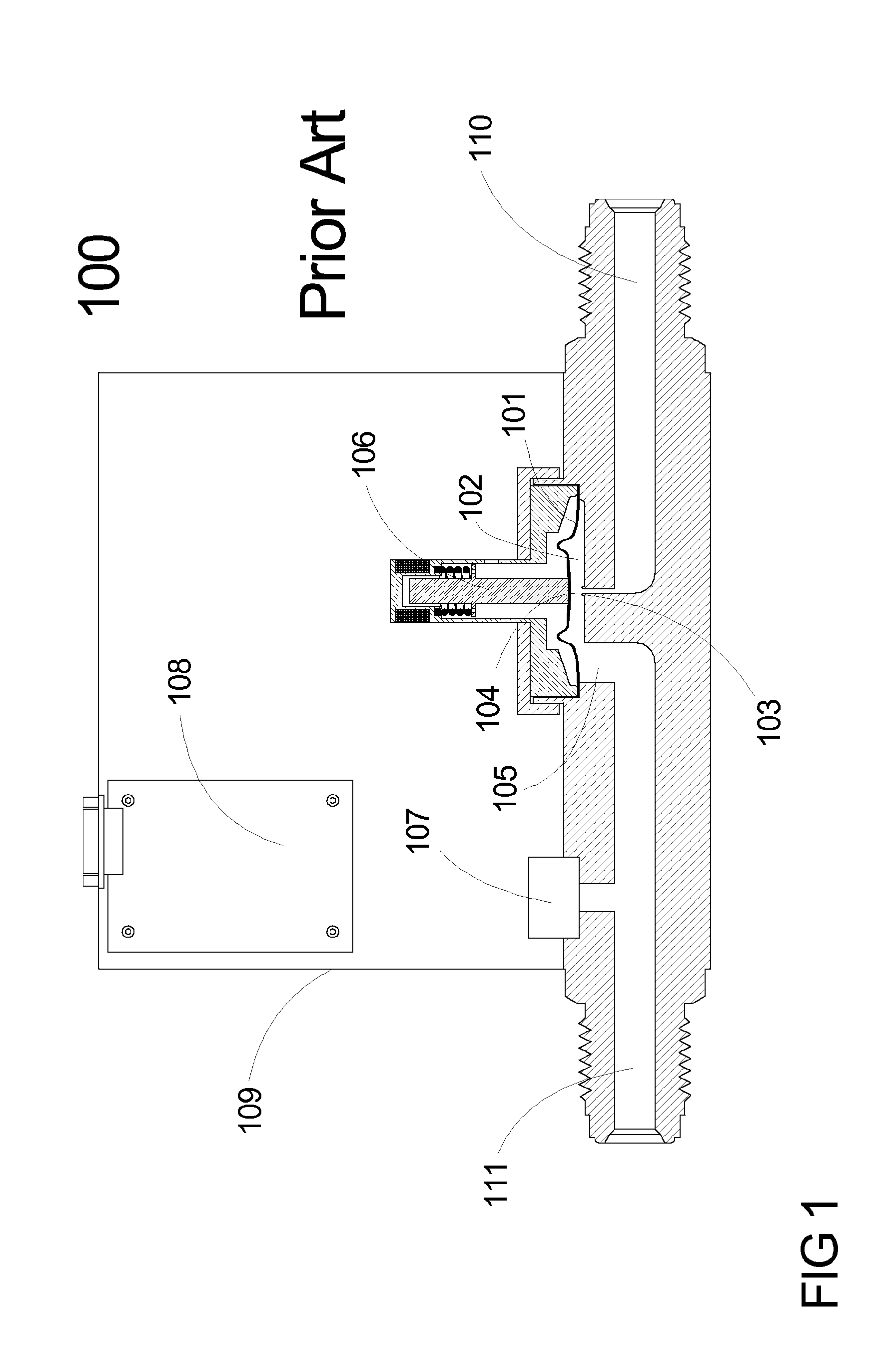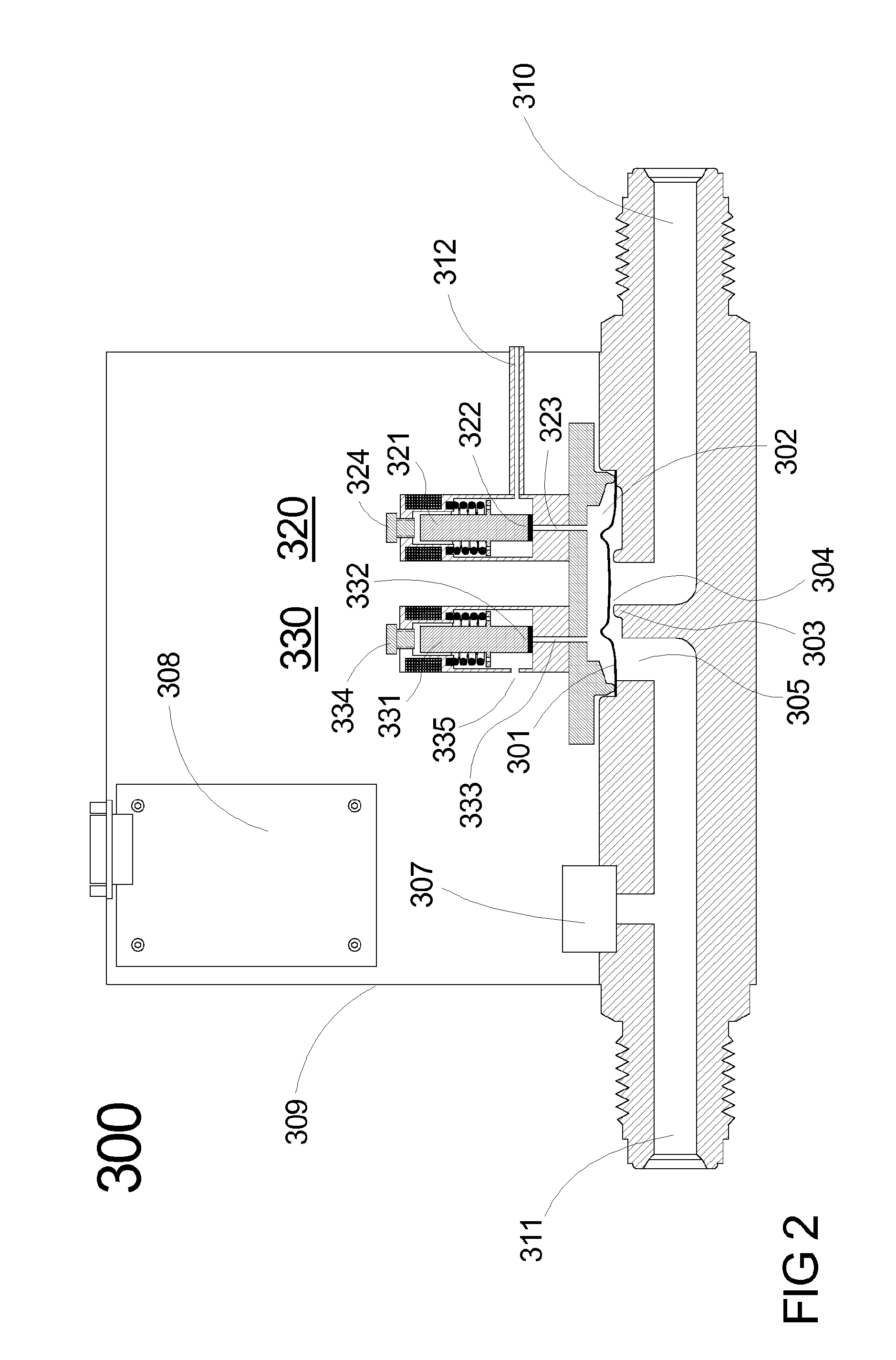Fluid-actuated flow control valves
a flow control valve and actuator technology, applied in the direction of diaphragm valves, engines, instruments, etc., can solve the problems of affecting the flow rate, mechanical stability and precision, and prone to significant wear of the needle over the needle cavity of the highest performing “metering needle valve”
- Summary
- Abstract
- Description
- Claims
- Application Information
AI Technical Summary
Benefits of technology
Problems solved by technology
Method used
Image
Examples
Embodiment Construction
[0043]While conventional flow and pressure control valves utilize mechanical means for deflecting a diaphragm in relation to a valve seat to affect orifice geometry, aspects of the invention instead utilize the pressure of a control fluid on a diaphragm to produce a similar effect. FIG. 2 shows a sectional view of a flow control valve 300 in accordance with a first illustrative embodiment of the invention. The flow control valve 300 comprises a metallic diaphragm 301 disposed so as to seal the flow path between valve seat 303 and fluid outlet port 305. Orifice 304 is thereby formed between diaphragm 301 and valve seat 303. A sealed diaphragm control space 302 is formed above diaphragm 301 and is partly defined by the diaphragm 301. The diaphragm control space 302 comprises control fluid inlet 323 and control fluid outlet 333. The flow control valve 300 also includes a flow or pressure sensor 307, inlet fitting 310, outlet fitting 311, control fluid inlet 312, solenoid valve 320, sol...
PUM
 Login to View More
Login to View More Abstract
Description
Claims
Application Information
 Login to View More
Login to View More - R&D
- Intellectual Property
- Life Sciences
- Materials
- Tech Scout
- Unparalleled Data Quality
- Higher Quality Content
- 60% Fewer Hallucinations
Browse by: Latest US Patents, China's latest patents, Technical Efficacy Thesaurus, Application Domain, Technology Topic, Popular Technical Reports.
© 2025 PatSnap. All rights reserved.Legal|Privacy policy|Modern Slavery Act Transparency Statement|Sitemap|About US| Contact US: help@patsnap.com



